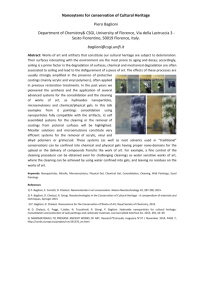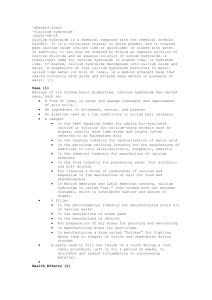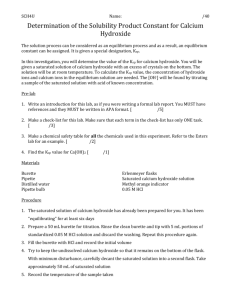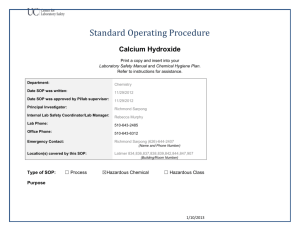NEW PRODUCTS AND MATERIALS FOR
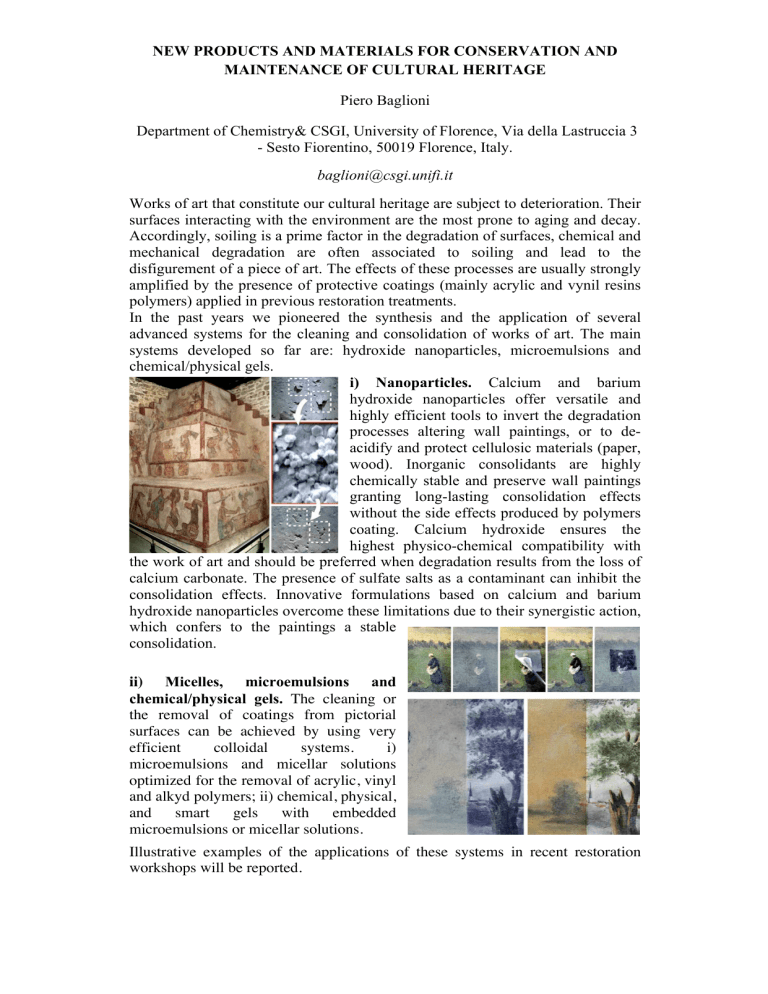
NEW PRODUCTS AND MATERIALS FOR CONSERVATION AND
MAINTENANCE OF CULTURAL HERITAGE
Piero Baglioni
Department of Chemistry& CSGI, University of Florence, Via della Lastruccia 3
- Sesto Fiorentino, 50019 Florence, Italy. baglioni@csgi.unifi.it
Works of art that constitute our cultural heritage are subject to deterioration. Their surfaces interacting with the environment are the most prone to aging and decay.
Accordingly, soiling is a prime factor in the degradation of surfaces, chemical and mechanical degradation are often associated to soiling and lead to the disfigurement of a piece of art. The effects of these processes are usually strongly amplified by the presence of protective coatings (mainly acrylic and vynil resins polymers) applied in previous restoration treatments.
In the past years we pioneered the synthesis and the application of several advanced systems for the cleaning and consolidation of works of art. The main systems developed so far are: hydroxide nanoparticles, microemulsions and chemical/physical gels. i) Nanoparticles.
Calcium and barium hydroxide nanoparticles offer versatile and highly efficient tools to invert the degradation processes altering wall paintings, or to deacidify and protect cellulosic materials (paper, wood). Inorganic consolidants are highly chemically stable and preserve wall paintings granting long-lasting consolidation effects without the side effects produced by polymers coating. Calcium hydroxide ensures the highest physico-chemical compatibility with the work of art and should be preferred when degradation results from the loss of calcium carbonate. The presence of sulfate salts as a contaminant can inhibit the consolidation effects. Innovative formulations based on calcium and barium hydroxide nanoparticles overcome these limitations due to their synergistic action, which confers to the paintings a stable consolidation. ii) Micelles, microemulsions and chemical/physical gels.
The cleaning or the removal of coatings from pictorial surfaces can be achieved by using very efficient colloidal systems. i) microemulsions and micellar solutions optimized for the removal of acrylic, vinyl and alkyd polymers; ii) chemical, physical, and smart gels with embedded microemulsions or micellar solutions.
Illustrative examples of the applications of these systems in recent restoration workshops will be reported.
